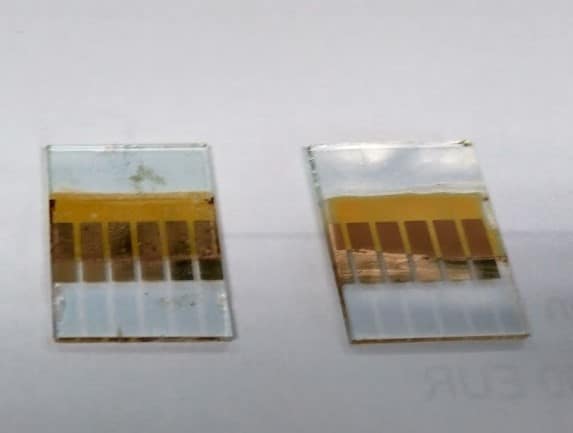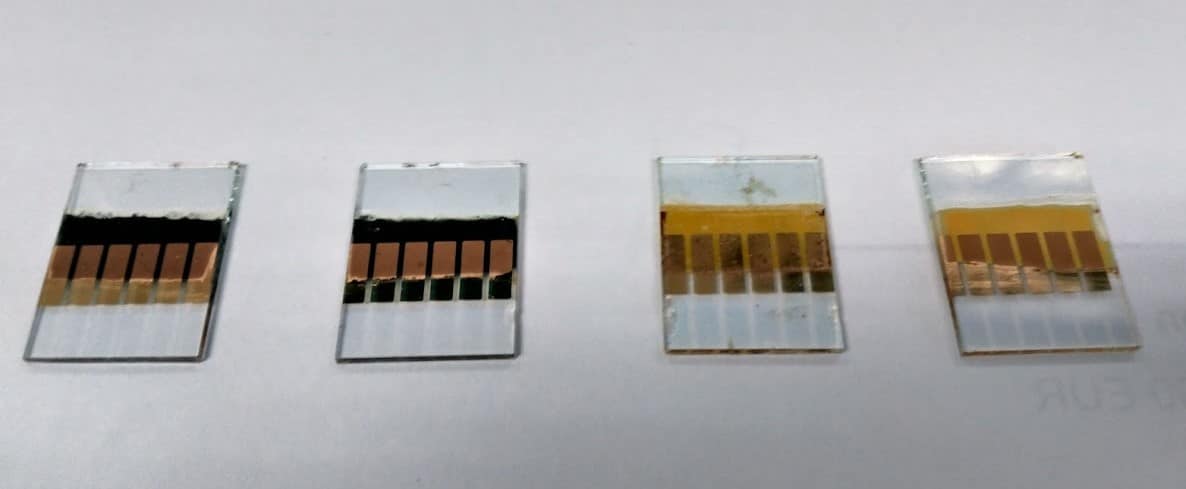Scientists from Universitat Politecnica de Valencia in Spain have developed solid-state solar cells with special kinds of metal-organic framework (MOF) nanomaterials.
MOFs are new, promising porous materials in the areas of gas absorption and separation, catalysis, drug delivery, and molecule sensing. Nanoparticles made of such materials are used as components in chemical sensors, biological probes, and membrane separation materials, and serve as building blocks for colloidal crystal engineering.
The Spanish researchers said the porous nanomaterials are also appealing for solar cell applications due to their flexibility in design and preparation, extremely high surface-area values, and tunable pore volumes and pore size distributions. They used two different MOFs that are known as MIL-125(Ti) and UiO-67(Zr) and whose behavior as semiconductors and photocatalysts is already known. The nanomaterials do not absorb visible light and their properties have been confirmed by X-ray diffraction, thermogravimetry analysis, surface area (BET) measurements, and infrared spectroscopy.
The scientists built solar cells with five layers, including indium tin oxide (ITO), titanium oxide (TiO2), spiro-MeOTAD, and gold. Spiro-MeOTAD is the best solid-state hole transporting material that has been used thus far for solid-state, dye-sensitized solar cells, organic light-emitting diodes, and perovskite solar cells.
“TiO2 was deposited between the transparent conducting electrode (ITO) and the MOF material and a transparent hole transport layer of spiro-MeOTAD was deposited on top of the MOF,” the academics explained, adding that the gold metallic layer was deposited on top of a polymer substrate as a cathode electrode.

The cells built with the MIL-125(Ti) showed the best performance and highest current density between the two devices. The researchers attributed this to the long-lived lifetime of the charge-separated state and more efficient photo-induced charge separation. In particular, a cell fabricated with MIL-125(Ti) and groups of amino radical (NH2) showed increased photovoltaic activity compared to other solid-state cells.
“Currently the efficiency is lower than 1%, since it is a proof of concept, and still requires some optimization of the material,” researcher Pedro Atienzar told pv magazine. “For instance, decreasing particle size and increasing charge carrier mobility within the MOF particle are two parameters that should lead to further increase in efficiency.”
Atienzar also described the process to produce the MOFs as an easy synthetic procedure. He said the use of abundant, non-toxic, cheap materials could soon enable the low-cost production of solid-state solar cells based on nanomaterials.
“In view of the cost materials and simple methodology, their fabrication is feasible,” he said.
The researchers described the solar cells in “Photoactive Zr and Ti Metal‐Organic‐Frameworks for Solid‐State Solar Cells,” which was recently published in ChemPhysChem.
This content is protected by copyright and may not be reused. If you want to cooperate with us and would like to reuse some of our content, please contact: editors@pv-magazine.com.




By submitting this form you agree to pv magazine using your data for the purposes of publishing your comment.
Your personal data will only be disclosed or otherwise transmitted to third parties for the purposes of spam filtering or if this is necessary for technical maintenance of the website. Any other transfer to third parties will not take place unless this is justified on the basis of applicable data protection regulations or if pv magazine is legally obliged to do so.
You may revoke this consent at any time with effect for the future, in which case your personal data will be deleted immediately. Otherwise, your data will be deleted if pv magazine has processed your request or the purpose of data storage is fulfilled.
Further information on data privacy can be found in our Data Protection Policy.